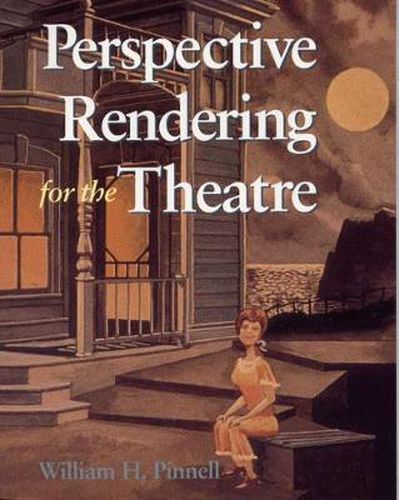Readings Newsletter
Become a Readings Member to make your shopping experience even easier.
Sign in or sign up for free!
You’re not far away from qualifying for FREE standard shipping within Australia
You’ve qualified for FREE standard shipping within Australia
The cart is loading…






William H. Pinnell first issues an invitation to investigate the magic of perspective and explore its wondrous surround, then escorts the beginning as well as the advanced student through the complex process of artistically conveying scene designs via the scenographic drawing. Step by step, he illustrates the principles of perspective that apply to stage design. Starting with a brief history of perspective, he furnishes all of the information designers will need to transform a blank surface into a unique expression of theatrical space.
As Pinnell makes clear, a stage setting must be fully planned far in advance of its actual construction. Each designer must have a picture of how the setting will appear when it is ready for opening night. The scenic designer must then be able to render that picture, to communicate his or her ideas through a series of initial sketches that, combined with directorial consultation, eventually evolve into an approved plan for the actual setting. Many of these plans take the form of working drawings–floor plans, elevations, and the related schematics necessary for the shop staff to construct the design. Pinnell insists that as closely as possible, the model–the graphic and tangible rendering of the designer’s vision–must reflect what the actual stage set will look like when the audience sees it in the performance. His concern is to show how one faithfully and accurately represents the actual, finished stage design through theatrical rendering.Pinnell achieves this goal through an introduction and six chapters. He provides the historical background in a chapter titled The Perspective Phenomenon, which covers preclassical Greece, Greek and Roman notions of perspective, and the concepts of the Italian Renaissance. The Perspective Grid: Learning the Basics deals with drafting tools, drawing the perspective grid, and the basics of measuring on the perspective grid. The Perspective Grid: Expanding the Basics discusses transferring a simple interior setting, plotting curves, and creating levels. The Perspective Grid: Variations analyzes the thrust stage, the raked stage, and the two-point perspective grid. Coloration and Form explains varied backgrounds, color media, and rendering with gouache. Finally, Presentation explains protection, framing, duplication, and the portfolio.
Except for the intricacies of the human anatomy, there is nothing a designer must draw scenically that is not covered in this book.
$9.00 standard shipping within Australia
FREE standard shipping within Australia for orders over $100.00
Express & International shipping calculated at checkout
William H. Pinnell first issues an invitation to investigate the magic of perspective and explore its wondrous surround, then escorts the beginning as well as the advanced student through the complex process of artistically conveying scene designs via the scenographic drawing. Step by step, he illustrates the principles of perspective that apply to stage design. Starting with a brief history of perspective, he furnishes all of the information designers will need to transform a blank surface into a unique expression of theatrical space.
As Pinnell makes clear, a stage setting must be fully planned far in advance of its actual construction. Each designer must have a picture of how the setting will appear when it is ready for opening night. The scenic designer must then be able to render that picture, to communicate his or her ideas through a series of initial sketches that, combined with directorial consultation, eventually evolve into an approved plan for the actual setting. Many of these plans take the form of working drawings–floor plans, elevations, and the related schematics necessary for the shop staff to construct the design. Pinnell insists that as closely as possible, the model–the graphic and tangible rendering of the designer’s vision–must reflect what the actual stage set will look like when the audience sees it in the performance. His concern is to show how one faithfully and accurately represents the actual, finished stage design through theatrical rendering.Pinnell achieves this goal through an introduction and six chapters. He provides the historical background in a chapter titled The Perspective Phenomenon, which covers preclassical Greece, Greek and Roman notions of perspective, and the concepts of the Italian Renaissance. The Perspective Grid: Learning the Basics deals with drafting tools, drawing the perspective grid, and the basics of measuring on the perspective grid. The Perspective Grid: Expanding the Basics discusses transferring a simple interior setting, plotting curves, and creating levels. The Perspective Grid: Variations analyzes the thrust stage, the raked stage, and the two-point perspective grid. Coloration and Form explains varied backgrounds, color media, and rendering with gouache. Finally, Presentation explains protection, framing, duplication, and the portfolio.
Except for the intricacies of the human anatomy, there is nothing a designer must draw scenically that is not covered in this book.